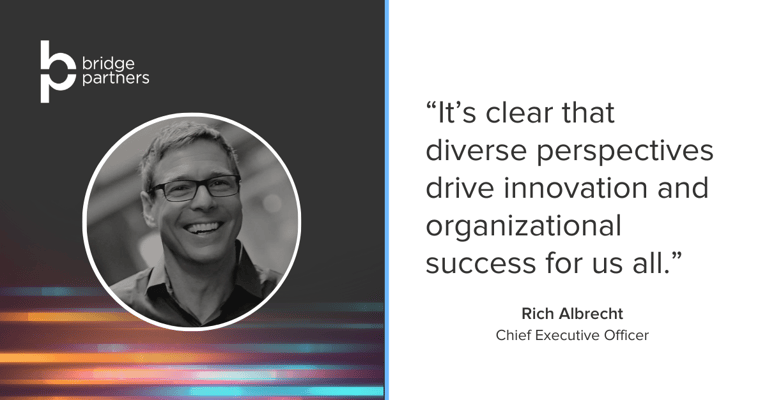Digital Transformation: What Does It Really Mean, What’s the Impact?

This is the second article in a three-part series about shifting age demographics in the workplace, the journey toward digital transformation, and what it all means in the Modern Workplace.
Part 1. Age demographics in companies and society are driving a huge change in how we work.
Part 2. What digital transformation really means, what it entails, and how the Covid-19 pandemic has accelerated the transition.
Part 3. The necessity for disruptive change in how we engage with customers in the modern workplace, and what that looks like.
Introduction
What do we mean by digital transformation? Many of the clients I talk to equate any (even relatively minor) change in a process to “transformation.” Doing things the same way they’re being done now, only with newer technology, is what I affectionately call the “more, better, faster” approach. In today’s business climate:
- the workforce is skewing younger
- we are still mostly remote or hybrid, and wrestling with how that model will merge with “in the office, in person, all the time”
- the shift to cloud has accelerated during the pandemic
- Moore’s Law is still valid, but its relevance has diminished in the face of new ways to measure processing power and the business implications that result.
Businesses need to re-think “how we’ve always done it,” and identify all the potential impacts, benefits, and risks associated with the sea change that is digital transformation, as well as the opportunity it enables for exponential innovation. Because it is such a complex undertaking, made even more complex by some of the things we’ve been discussing, only about one-fifth of businesses report having fully implemented their digital transformation strategy.
Defining “Digital Transformation”
This is my favorite definition of digital transformation:
“Digital transformation is the integration of digital technology into all areas of a business, fundamentally changing how you operate and deliver value to customers. It’s also a cultural change that requires organizations to continually challenge the status quo, experiment, and get comfortable with failure.”
Let’s unpack that a bit. “Digital transformation is the integration of digital technology into all areas of a business.” All areas. Many companies have deployed advancing technology to update existing processes in a one-for-one replacement, offering sometimes only incremental improvements. They’ve paid little or no attention to examining the interaction among multiple business processes, or the opportunity to innovate with newer technologies to enable a whole new and more efficient way of doing things, augmented by machine learning and artificial intelligence. Insights derived from analysis of massive amounts of available data using AI, for example, is something we could only dream of as recently as five years ago. Conversational bots on websites that can answer my questions far more quickly than trying to get a customer service rep on the phone have dramatically improved the online shopping experience.
“…fundamentally changing how you operate and deliver value to customers.” Let’s use a traditional B2B sales process to illustrate what this change might look like.
- Marketing conducts campaigns (via email, the web, social media), and those who respond to one of the calls to action for the campaign (“Click here to learn more,” or “Download our white paper…,” etc.) are “leads” which may be further qualified before they are passed along to sales.
- A dedicated inside sales rep contacts those leads, further qualifying whether there is a valid sales opportunity, and passes those to an outside sales rep to start working the deal, putting it in their forecast, and so on.
- That outside sales rep schedules a first meeting with the customer, exploring their interest, and giving them an overview of the product or service. They get some feedback, go off and create a presentation customized to the customer’s requirements, and schedule a second meeting to deliver their presentation, and gauge whether they are getting closer to what the customer wants. A lucky few get a third at-bat to deliver a refined proposal that the customer might accept, or an opportunity for final refinements.
Today and in the future,
- Traditional approaches to marketing are giving way to more personalized messaging, delivered in highly creative ways through social media, video (TikTok, for example) and other “non-traditional” channels, because digital natives don’t respond enthusiastically to traditional marketing.
- Face-to-face customer meetings, which were not possible during the height of the pandemic, are only beginning to be possible again, and not in all situations or for all customers. Hybrid and remote work are now a permanent fixture of how companies operate, even as many are beginning a return to the office.
- The cloud as the primary locus of computing power and data storage will continue to grow significantly. In early 2021, 1/3 of businesses reported moving 50% of their workloads to the cloud. By 2023, it is projected that 50% of all business workloads will run in the cloud. And 53% of all businesses accelerated their cloud adoption plans because of the business impact of the Covid-19 pandemic.
Re-thinking how we sell, market to, and support the ongoing success of our customers is not an option, but a necessity.
Consider the buyer-seller dynamic. Given that a seller in 2022 is likely to be contacted by a buyer after they’ve already done their research (on the company’s website, on social media, on other external websites, and through conversations with peers both within and outside the organizations they work for), and given that sellers have a limited window of time in which to interact directly with them (remember that buyers are allocating only 17% of their total buying time to all sellers[1]), a different approach to meet the dynamics of this Modern Workplace is required for more effective interactions with buyers.
“It’s also a cultural change that requires organizations to continually challenge the status quo, experiment, and get comfortable with failure.” Challenging the status quo is not always a comfortable process. There’s a feeling of safety in “how we’ve always done things,” and re-thinking things can lead to some fear and trepidation. But as the old saying goes, “with great risk comes great reward!”
People must absolutely be the first consideration in any planned change. Changing a core business process without considering the impact on your people and how they work, will, at the very least, create significant obstacles to acceptance. And even with careful planning, not everything you try will be successful, and that’s OK! Failure is an opportunity to learn what doesn’t work, make changes as you try again, and maybe again, until you achieve the results you’re after. The most useful feedback needed to fine-tune the change will come from the people impacted by it…listen to them!
Repeated failure can also be an indicator that what you’re trying to do isn’t ever going to work. While it’s important to plan carefully, consider the cultural as well as process and technology impact, and be willing to adjust your plans, or change them completely.
How are companies doing on their digital transformation journey?
The idea of transforming to a fully digital way of doing business is not new. While the term has been around for quite a long time (some point to an article by Claude Shannon in 1948, called “A Mathematical Theory of Communication” as the beginning of the digital revolution), it was only around 2013 that businesses began to really define digital transformation in the context of business. How’s it going? At the end of 2019, while 70% of companies either had a digital transformation strategy in place or in planning, only 7% had fully implemented their transformation strategy. Three years later, by some reckonings, that number has risen to 20%, but there’s still a long way to go before digital is the way that every company does business across every business function.
A successful digital transformation is not for the faint of heart. Changing age demographics and cool new software are not the only things involved. The speed of adoption of cloud technology,[2] is a critical factor in digital transformation, but keeping pace with rapidly changing technology without a sharp focus on people and process is a recipe for failure. McKinsey reports that 70% of all digital transformation programs fail due to employee resistance and lack of support from management and only 16% of employees said that their company’s digital transformation efforts improve their performance or are sustainable.
Big changes can generate substantial resistance from employees (“Things are working just fine the way they are!”). And, as we discussed in the last article, the different expectations that digital natives bring to the workplace have an outsized impact on the success of a company’s digital transformation journey.
These are just some of the reasons to bring your employees into the planning cycle at the beginning, and to ensure that they get comprehensive onboarding training as part of the implementation of change. It is also very important to prepare for user acceptance testing and continuous employee performance support. Employee acceptance is the most important factor for success. Engaged employees will become more productive and proficient with the new processes or technologies, and that will, in turn, deliver higher revenues and profits, as well as higher levels of customer satisfaction. Engaged employees are also happier, and less likely to become part of the Great Resignation.
In Part 3, we’ll bring it all together, and describe what a modern workplace that incorporates everything we’ve talked about looks like, and how achieving solid results in the modern workplace involves a disruptive change in how we market to, sell to, and support the ongoing success of customers.
[1] https://hbr.org/2022/02/traditional-b2b-sales-and-marketing-are-becoming-obsolete
[2] In a Harvard Business Review survey conducted in 2021, “survey respondents paint a picture of an even greater acceleration and expansion of cloud implementations over the past year than respondents did in the previous year’s Harvard Business Review Analytic Services cloud survey (a year during which many organizations had to migrate to or adopt cloud services overnight).
About the author



